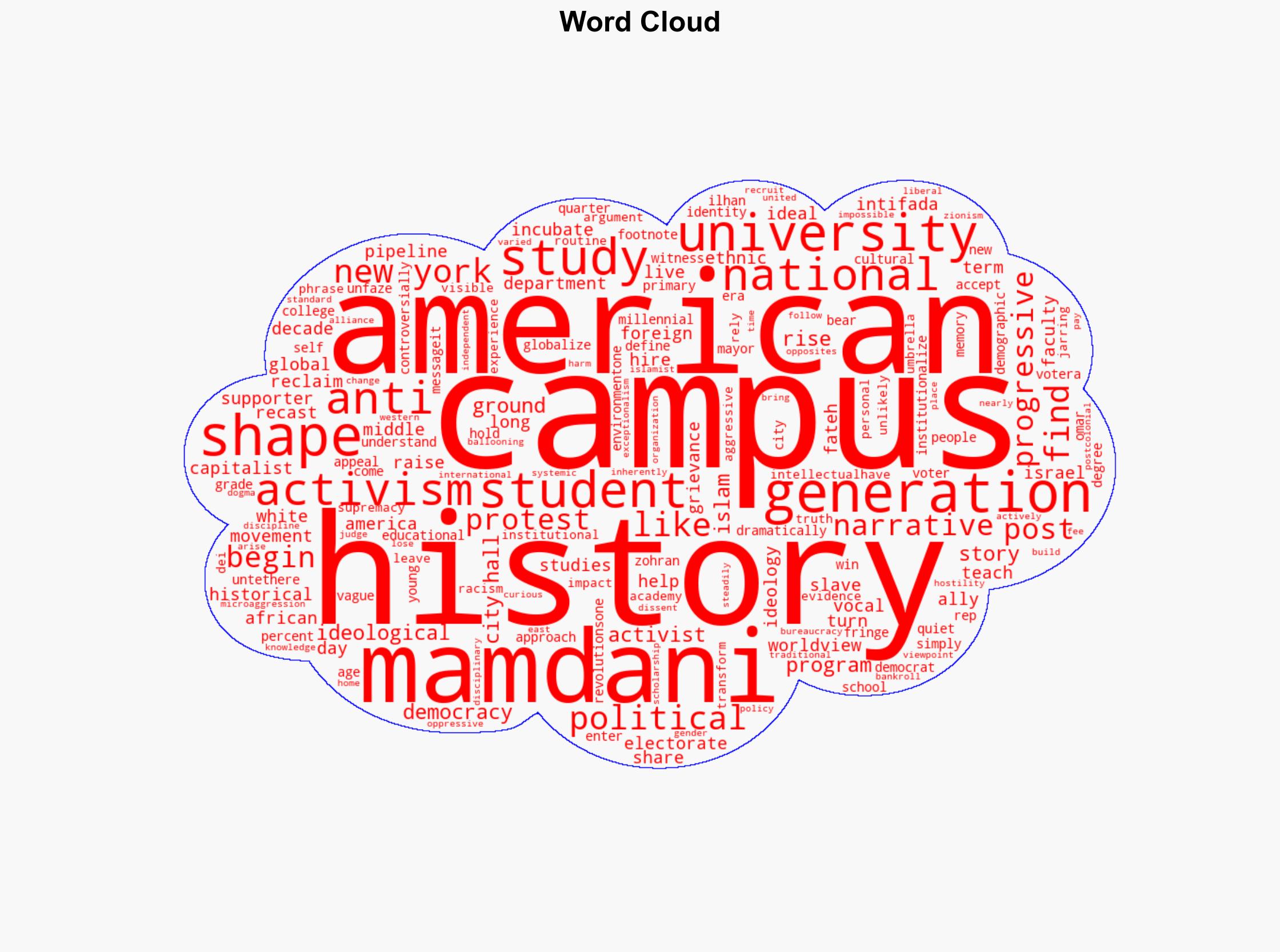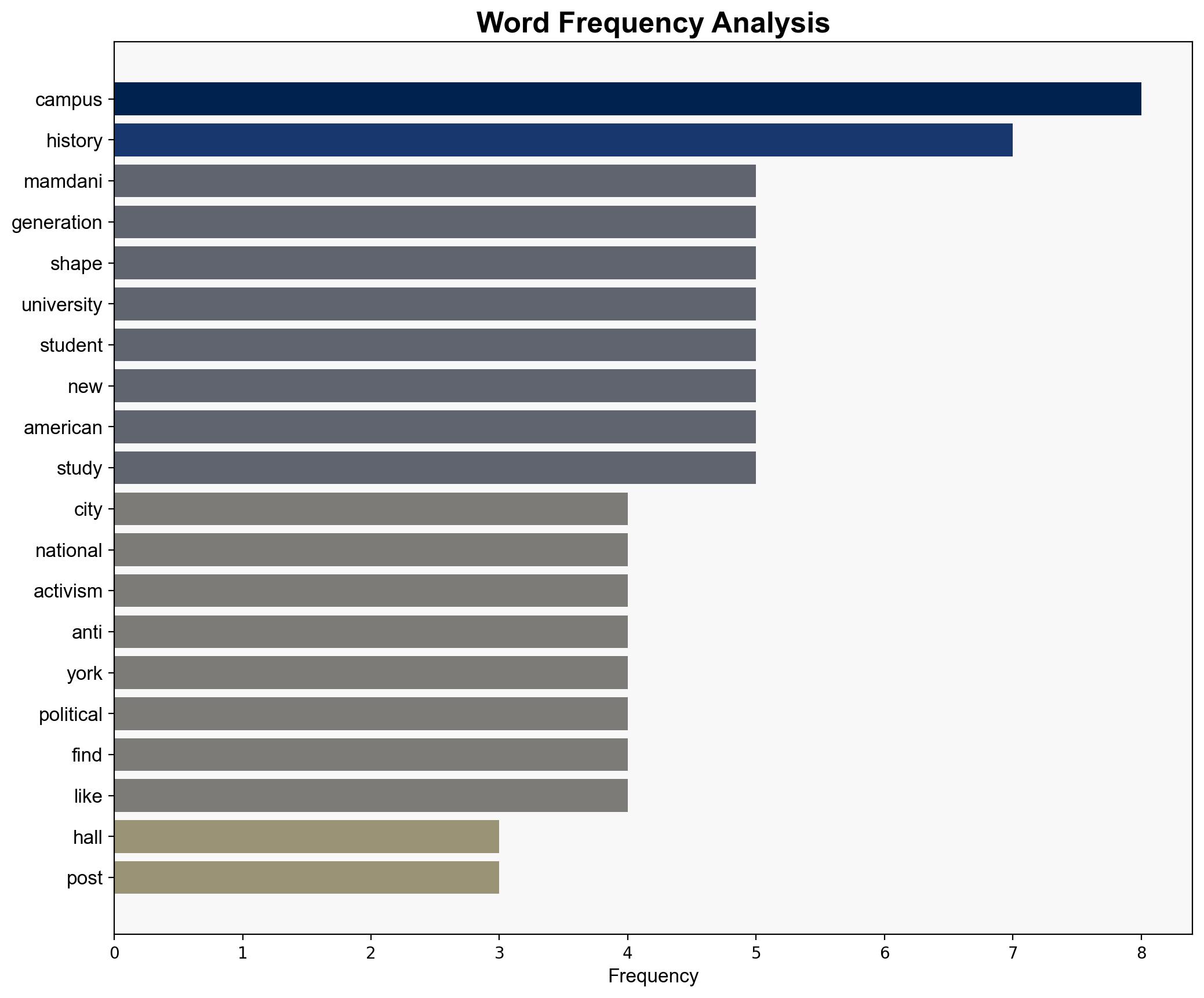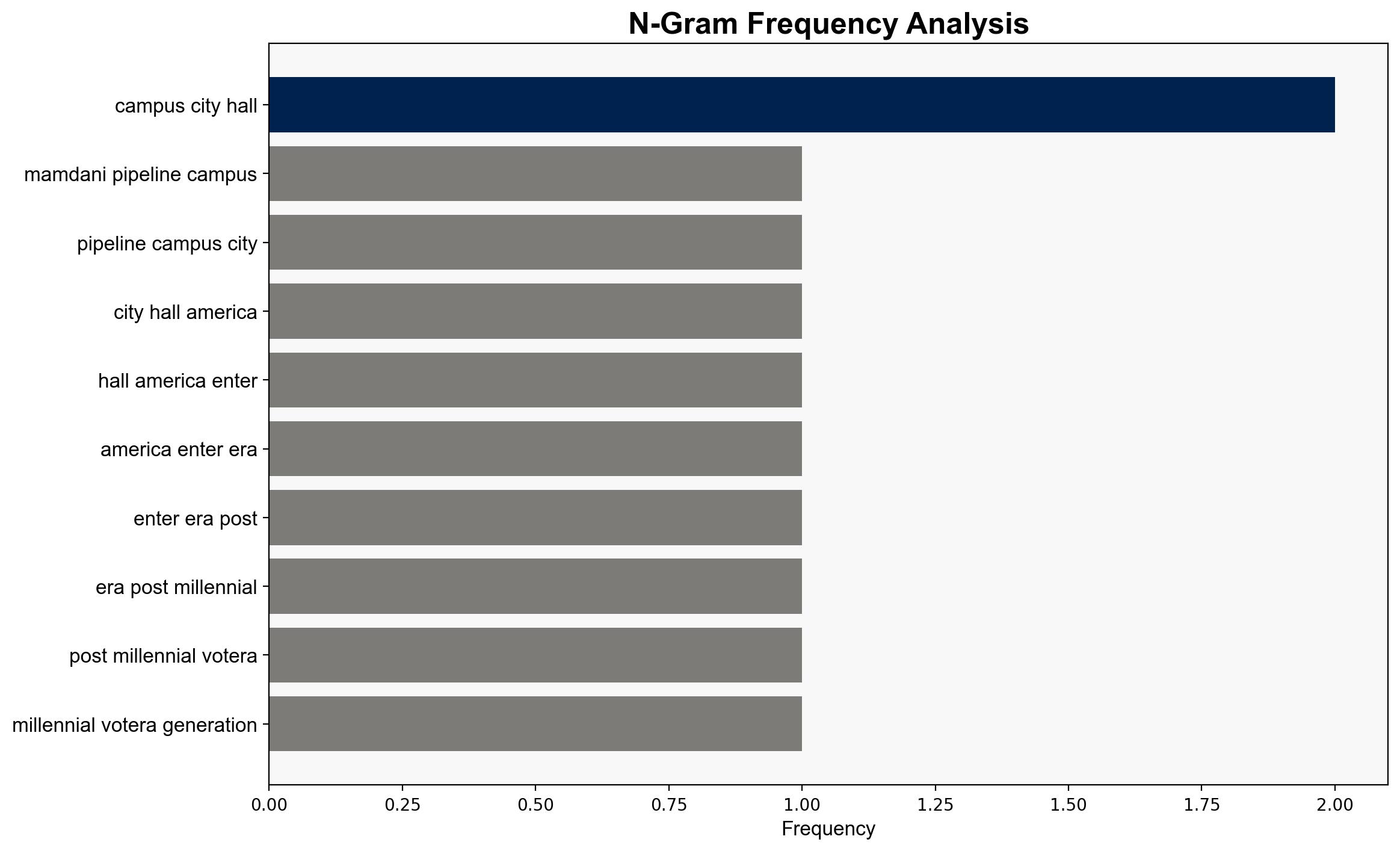911 to Mamdani The Pipeline From Campus to City Hall – Americanthinker.com
Published on: 2025-09-03
Intelligence Report: 911 to Mamdani The Pipeline From Campus to City Hall – Americanthinker.com
1. BLUF (Bottom Line Up Front)
The analysis suggests a moderate confidence level in the hypothesis that the ideological shift on campuses is significantly influencing political landscapes, particularly in urban areas like New York City. The recommended action is to monitor and engage with educational institutions to understand and potentially guide the ideological narratives being developed, ensuring they align with broader societal values and security interests.
2. Competing Hypotheses
1. **Hypothesis A**: The ideological shift on university campuses, characterized by progressive activism, is directly influencing political outcomes in urban centers, leading to the election of candidates with anti-capitalist and anti-establishment platforms.
2. **Hypothesis B**: The observed political changes in urban centers are primarily driven by broader demographic shifts and economic factors, with the campus activism serving as a secondary or symbolic influence rather than a primary driver.
Using the Analysis of Competing Hypotheses (ACH) 2.0, Hypothesis A is better supported by the evidence of increased political engagement among younger voters with progressive ideologies and the direct link between campus activism and political platforms of candidates like Zohran Mamdani.
3. Key Assumptions and Red Flags
– **Assumptions**: It is assumed that the ideological narratives developed on campuses have a direct and significant impact on broader political landscapes. Another assumption is that the demographic changes are inherently aligned with progressive ideologies.
– **Red Flags**: The potential bias in attributing political changes solely to campus activism without considering other socio-economic factors. The lack of quantitative data linking campus ideologies to voting patterns is a significant blind spot.
4. Implications and Strategic Risks
The potential for increased polarization and societal division is a key risk if the ideological shift is not managed or understood adequately. There is also a risk of foreign influence through funding and ideological shaping of educational narratives, which could impact national security. The alignment of campus ideologies with broader political movements could lead to significant policy shifts that may not align with traditional national interests.
5. Recommendations and Outlook
- Engage with educational institutions to foster open dialogue and ensure diverse viewpoints are represented.
- Monitor foreign funding and influence in educational settings to safeguard against potential security threats.
- Scenario Projections:
- Best Case: Balanced ideological representation leads to innovative policy solutions.
- Worst Case: Increased polarization leads to societal unrest and policy gridlock.
- Most Likely: Continued ideological influence from campuses shapes urban political landscapes, with gradual policy shifts.
6. Key Individuals and Entities
Zohran Mamdani, Ilhan Omar, Ibram Kendi
7. Thematic Tags
national security threats, cybersecurity, counter-terrorism, regional focus




